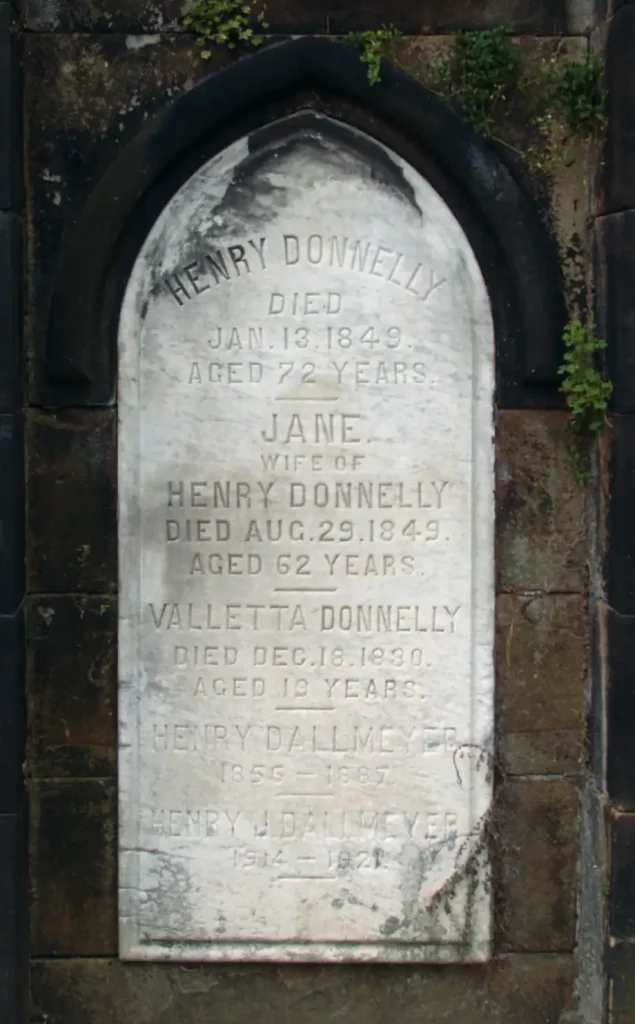
This Gothic shaft no longer bears any legible inscriptions except the name McKee in a shield halfway up the shaft and, added later, the name Dravo on the base. For genealogical purposes it is a disappointment, but as a picturesque accessory in the landscape it is probably even more delightful in its worn state than it was when it was new. It was probably put up in the 1870s; the plot owner was one Samuel McKee.












